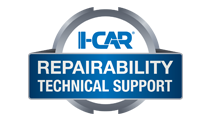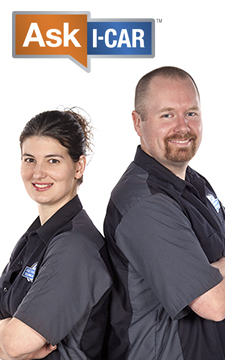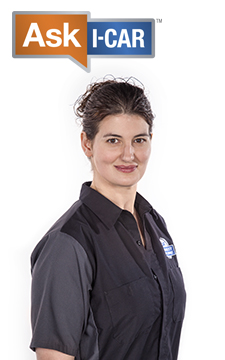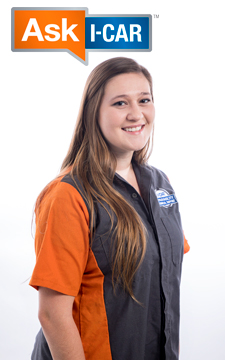OEM Restraints System Part Replacement Search
2008 GMC Yukon Hybrid
Share:
|
DISABLE PROCEDURE AND TIME (Always Check Service Manual)
1. Turn the steering wheel so that the vehicle's wheels are pointing straight ahead.2. Place the ignition in the OFF position.
3. Disconnect the negative battery cable from the battery.
4. Wait 1 minute before working on system.
REV: 10/2010
PARTS THAT MUST BE REPLACED FOLLOWING A DEPLOYMENT
After a collision with frontal air bag deployment, replace the following components. If you detect anydamage, replace the component. If you detect any damage to the mounting points or mounting
hardware, repair or replace the mounting points and mounting hardware as needed:
• Inflatable restraint front end sensors [AIRBAG SENSOR,FRONT]
• Inflatable restraint I/P module, if deployed [AIRBAG,INSTRUMENT PNL]
• Inflatable restraint sensing and diagnostic module (SDM) [MODULE,AIRBAG CONTROL]
• Inflatable restraint steering wheel module [AIRBAG,STEERING WHEEL]
• Inflatable restraint steering wheel module coil [CLOCK SPRING]
• Seat belt pretensioners
• Replace any seat belt system that was in use during the collision serious enough to deploy any automatic restraint device such as air bags and seat belt pretensioners
• Any damaged restraint system part
After a collision involving driver/passenger side seat air bag deployment, replace the following components:
• Inflatable restraint roof rail module, on the side of the impact. [AIRBAG, ROOF]
• Inflatable restraint side impact sensors (SIS) (front/rear), on the side of the impact [AIRBAG SENSOR,FRT DOOR, AIRBAG SENSOR,RR DOOR]
• Inflatable restraint SDM [MODULE,AIRBAG CONTROL]
• Seat belt pretensioner, on the side of impact.
• Replace any seat belt system that was in use during the collision serious enough to deploy any automatic restraint device such as air bags and seat belt pretensioners
• Any damaged restraint system part
Sensor Replacement Guidelines:
• The SIR/side air bag sensor replacement policy requires replacing sensors in the area of accident
damage. The area of accident damage is defined as the portion of the vehicle which is crushed, bent, or damaged due to a collision. An example of this would be a moderate collision where the front of the vehicle impacts a tree, if the vehicle has an SIR sensor mounted forward of the radiator, replace the SIR sensor.
• Sensor damage which is not visible, such as slight bending of the mounting bracket or cuts in the
wire insulation, can cause improper operation of the SIR/side air bag sensing system. Do not try to
determine whether the sensor is undamaged. Replace the sensor. Also, if you follow a diagnostic
PARTS THAT MUST BE INSPECTED AND REPLACED IF DAMAGED
After any collision, inspect the following components as indicated. If you detect any damage, replace the component. If you detect any damage to the mounting points or mounting hardware, repair the component or replace the hardware as needed:• Hybrid vehicles--Perform an inspection of the high voltage system for damage. Refer to High Voltage System Inspection.
• The steering column--IPerform the steering column accident damage checking procedures. Refer to Steering Column Accident Damage Inspection.
• The instrument panel knee bolsters and mounting points--Inspect the knee bolsters for bending, twisting, buckling, or any other type of damage.
• The instrument panel brackets, braces, etc.--Inspect for bending, twisting, buckling, or any other type of damage.
• The seat belts--Perform the seat belt operational and functional checks. Refer to Operational and Functional Checks.
• The instrument panel mounting points and brackets--Inspect for bending, twisting, buckling, or any other type of damage.
• The roof rail and roof rail module mounting points--Inspect for bending, twisting, buckling, or any other type of damage.
• The seats and seat mounting points--Inspect for bending, twisting, buckling, or any other type of damage.
• Passenger seat bottom equipped with Passenger Presence System (PPS)--Check for any DTCs or problems that may cause the PPS not to function properly.
After a collision with frontal air bag deployment, Perform additional inspections on the following components:
• Steering wheel air bag coil and the coil wiring pigtail--Inspect for melting, scorching, or other damage due to excessive heat.
• Mounting points or mounting hardware for the passenger instrument panel air bag, steering wheel air bag, SDM, seat side air bag (if deployed) and seat belt anchor and/or retractor pretensioners --Inspect for any damage and repair or replace each component as needed
After a collision involving driver/passenger side seat air bag deployment, Perform additional inspections on the following components:
• Mounting points or mounting hardware for the SIS, roof rail module (left/right), and seat belt pretensioner on the side of impact--Inspect for any damage and repair or replace each
component as needed.
• Mounting points or mounting hardware for the SDM and vehicle rollover sensor--Inspect for
any damage and repair or replace each component as needed.
• Replace any seat belt system that was in use during the collision serious enough to deploy any automatic restraint device such as air bags and seat belt pretensioners. This not only includes seat belt systems in use by people of adult size, but seat belt systems used to secure child restraints, infant carriers and booster seats, including LATCH system and top tether anchorages.
• Replace any seat belt system that has torn, worn, or damaged components. This not only includes adult seat belt systems, but built-in child restraints and LATCH system components, if any.
• Replace any seat belt system if you observe the words "REPLACE" or "CAUTION", or if a yellow tag is visible. Do not replace a seat belt if only the child seat caution label is visible.
• Replace any seat belt system if you are doubtful about its condition. This not only includes adult seat belt systems, but built-in child restraints, LATCH system components, and any restraint system used to secure infant carriers, child restraints, and booster seats.
Do NOT replace single seat belt system components in vehicles that have been in a collision as described above. Always replace the entire seat belt system with the buckle, guide and retractor assembly, which includes the latch and webbing material
| Additional Information |
*This matrix does not currently contain all production vehicles sold in the United States. The contents were developed in cooperation with AudaExplore, a Solera company. The contents are based on the information available at the time of publication. Updates and additions will be posted as they become available. To ensure that you are using the most recent information, always refer to vehicle maker technical information.









